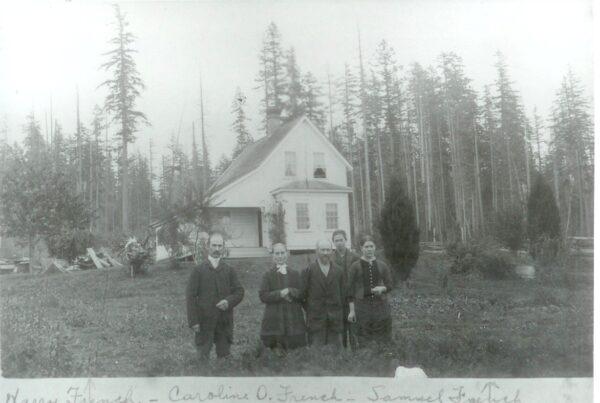Newspapers, published for the information and enjoyment of Kirkland people and those living in adjacent areas, have been in existence here for the past 64 years. They began with the Kirkland News, a four-page paper printed and published in Seattle. Vol. 1, No. 1; of the News paper appeared on September 6, 1890. Owners of the publication were Alex Anderson and Edward L. Sutter. A regular feature of the paper, was the train schedule of the Lake Shore and Eastern Railroad, a facility which local people used — in lieu of riding a lake boat for transportation to and from Seattle. The old roadbed of the railway still is in evidence on Rose Hill near 118th, east of the present Northern Pacific tracks.
Sam Collins was one of the early publishers. Chambers Was Editor A little later W. E. Chambers became the editor of the Kirkland News Independent, which in turn was taken over by the old-time real estate firm of Burke and Farrar, names synonymous with Kirkland.
On July 25, 1918, the ‘East Side Journal made its debut. A mortgage foreclosure had finished the operations of the Independent and Chambers, who had left Kirkland, was encouraged to return and serve as editor of the Journal. One of the early objectives of the Journal publishers was to show Kirkland and environs as an ideal place to live. Burke and Farrar distributed copies of the newspaper throughout the mid-West, primarily in Minnesota and the Dakotas, urging the natives of those areas to move out on the shores of Lake Washington. In those days Guy Farrar was promotion man for the concern and made “Chautauqua tours” of the central states
searching out prospects.
In returning to Kirkland as editor of the new East Side Journal, Chambers had this to say in a Page One editorial: “I come not as a stranger in your midst, and believe that during the years I edited the local paper I demonstrated some editorial ability, and am confident that when you review the editorial policy pursued you will remember I relentlessly fought vice, corruption and graft in every shape and form, even to my own personal detriment The enemies of the people were my enemies, and those interested in the uplift and betterment of man always found my paper their champions.”
Further on in the article, Chambers said, “it was evident that Mr. Wester (W. L. Wester) was sincere when he said the only desire of the land company (Burke and Farrar) was to have a high class newspaper of a constructive nature that would be a credit to the community, otherwise he would not have come to me, due to the fact I am, and always have been, opposed to the company in almost every Kirkland boy not long out of Uncle Sam’s World War I uniform. Things weren’t so rosy with the paper when “Dick” assumed command but they were soon after Everest assumed control of it.
A highlight in “Dick” Everest’s tenure as publisher of the Journal was the day in 1927 when the newspaper was moved to new quarters on Lake Street, where it has been located until the recent move to the new Journal Building, a few doors south. The late John Wester, father of Jack Wester, Kirkland business man, was architect and builder of the four-story printing plant and apartment units. A brochure printed and distributed by Everest stated, “We have moved into our new home. It gives us a great deal of pleasure to present it to the people , of the East Side of Lake Washington for, after all, our new home is nothing more or less than the home of your newspaper.”
After operating the paper for so many years and parlaying it from a little four-pager to a news organ with bulk in size and weight in editorial content, “Dick” sold the Journal on September 1, 1937, to Bob and Paul Frank.
This brother combination came from the mid-west, Bob as a journalist and Paul, an accountant. Bob, a big, good-natured individual, is an expert on typography and the appearance of the Journal during his time was held in high regard both by his subscribers and the people who rate newspapers on performance. Paul later dropped out of the picture and Bob carried on alone.
Frank operated the Journal for 11 years. In 1948 the newspaper was purchased by its present owners, operating as a partnership until July of this year when it became a corporation.


